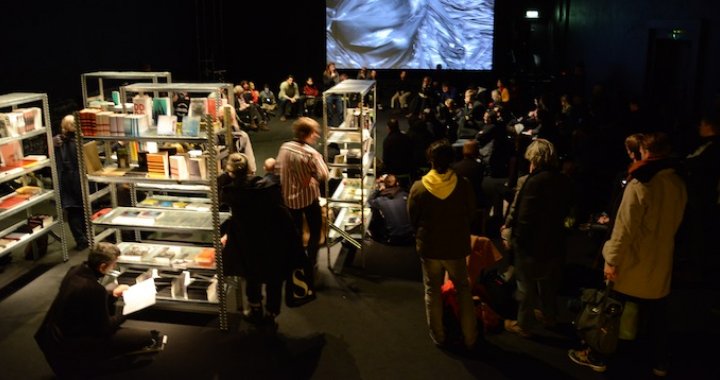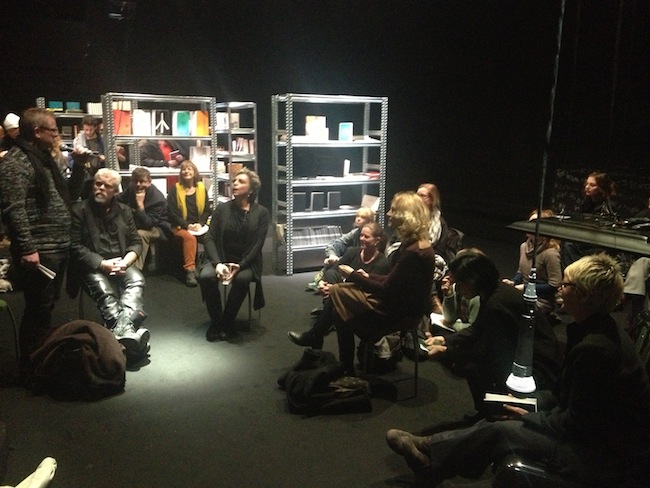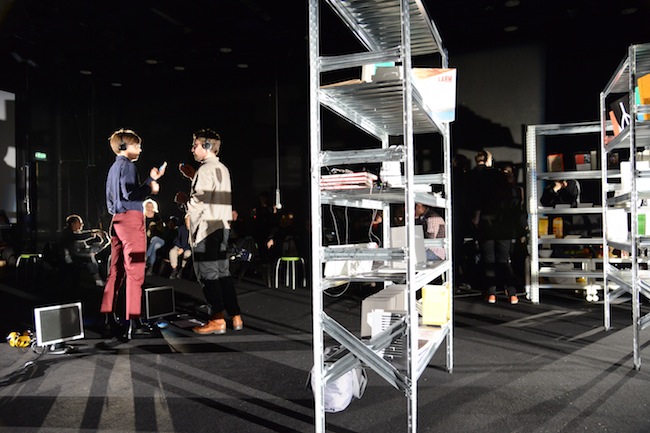
Weaving Politics
Alida Ivanov
03/01/2013
While the word of last month was “apocalypse”, the word of the weekend December 14-16 was “weaving” – Weaving Politics, a Stockholm-based international symposium on choreography, power, violence and human rights. Cristina Caprioli, who is a choreographer, artistic director at www.ccap.se and Professor of Choreography at the University of Dance and Circus in Stockholm, initiated it. This symposium was a key event of the two-year research project conducted by Cristina Caprioli with support of the Swedish Research Council.

Peggy Phelan
I realize now that the whole experience is hard to wrap my head around. And ultimately it was hard to write about. It was big – big subjects, big speakers, everything felt big. Weaving Politics started early on the Friday morning (I was late), and that was followed by three days of lectures. My first impression was that I was impressed. With this multitude of names and the organization of the event, you could not feel anything else. Among the speakers you had philosopher Julia Kristeva, Peggy Phelan, Professor in Drama and English at Stanford University, and curator/writer Irit Rogoff.

Moderator Per Nilsson with Mattias Gardell and Irit Rogoff
The symposium was divided into two parts – Day Watch and Night Watch. In the Day Watch you listened to readings by scholars, dancers, performers. The format was based on a meeting between the speakers, who would discuss similar topics. Each speaker read out their papers and then met each other with the help of a respondent/moderator. The Night Watch was the breather, where you could meet and talk to each other. There was a third part too – the dance performance Human Writes by William Forsythe, which I won’t go into detail because dance is not really my field. This division worked pretty well, but I would have liked to see more interaction with the audience. The program was dense and this made it hard for me as an audience member to engage. I can see two possible reasons for this. One, the respondents/moderators were too unaware how to engage an audience, or two, there was no will to engage the audience at all. I found that very interesting, but it was in the backdrop of the subject of violence and the issue of exercising power over someone. Peggy Phelan brought this into light during her reading on the first day. She gave a speech on Beckett’s use of choreography, but also a personal story of how she ended up at the symposium. It became a performance, where she choreographed Caprioli’s movements on stage. In the same fashion as Caprioli choreographed the audience’s actions in the building. Irina Sandomirskaja, Professor of Cultural Studies at the Center for Baltic and East European studies at Södertörn University, spoke of this in a way too. She gave a talk on Lidia Ginzburg and the blockade of Leningrad 1942–43. The Germans exercised their power on the city and had a total control over the bodies of people, until the bodies gave up. This led me to think about the relationship to the body. Many of the speakers talked about the body (it is hard to overlook, because dance is dependent on the body). Boyan Manchev, a philosopher, Professor at the New Bulgarian University and Guest Professor at the Sofia University and at the HZT – UdK Berlin, discussed the myth of Arachne, the woman who was turned into a spider at the wrath of Athena. Manchev talked of her as the first political weaver (yes, that word re-appeared throughout the whole symposium) in the perspective of the body that “implodes” in itself and at the same time gives birth of a new technical being. The body is in many ways detached from the power of our minds; but someone else can exercise their power over it, choreograph our movements. In other ways the body is attached to the mind – elasticity of mind equals elasticity of body. It becomes a paradoxical relationship; something that we all have probably experienced. I can’t write about this without mentioning Julia Kristeva here. She proposed a reinvention of humanism that would suit our zeitgeist. She wanted us to consider the crossroads of the body and meaning, of biology and sublimation. And look upon dance in the light of this and through that in the adolescent’s relationship to the mother, which is based on perversion. Do we in that case have a perverted relationship to our bodies?
ccap/Cristina Caprioli. Night Watch. Photo: Christofer Fredriksson
I met an artist friend of mine during the symposium and we started talking. Both she and I were a bit dumbfounded to feel totally out of place in this new field – the dance field feels strange and foreign compared to the art field. Dance paired up with academia is even more foreign. She observed that, in a way, dance uses more theory than art does. What happened to the notion of feeling in both arts?
This led me to think about Irit Rogoff’s reading on disenchantment and how it has colored the way we gain knowledge. I would like to see more mythologies in the arts, but maybe less so in politics.
Weaving Politics was an experience and as I said in the beginning – it was big. I’m not sure if I captured its essence, but I’m sure that no one could. One takes, what one needs.
